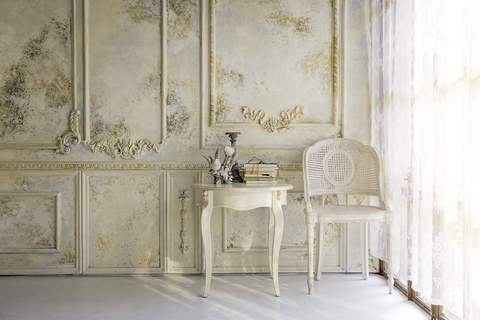- Home
- Learn About Antique Furniture and Reproductions
- Resources
- History
- Understanding Empire-Style Furniture
Understanding Empire-Style Furniture

Empire-style furniture refers to the decorative arts movement that emerged during the reign of Napoleon Bonaparte, a period in which France sought not only territorial expansion but cultural supremacy. This style, born out of Napoleon’s ambition to evoke imperial Rome and ancient civilizations, was a political and artistic statement rendered in wood, marble, and gilded finish.
The Historical Context of the French Empire
The First French Empire was formally established in 1804, when Napoleon Bonaparte crowned himself Emperor, and it endured until 1814. During this period, France became embroiled in nearly continuous military campaigns, asserting dominance across much of continental Europe. Though Napoleon’s rule was marked by the erosion of certain civil liberties under a centralized authoritarian regime, it also fostered notable advancements in public education, religious tolerance, and the arts.
The decorative arts, particularly furniture making, were not immune to Napoleon’s influence. In fact, furniture became an extension of his political ideology—each piece a carefully calibrated symbol of French supremacy and cultural sophistication. Furniture produced during this era had to conform to specific aesthetic standards that aligned with imperial ideals. Over time, the Empire style proliferated throughout Europe and crossed the Atlantic to influence American Empire-style furniture designs, especially during the Federal period.
Hallmarks of Empire-Style Furniture
The most immediately striking feature of Empire-style furniture is its sheer scale. These pieces were intentionally designed to awe and inspire, communicating a sense of permanence and power. Monumental in presence, they often anchored grand interiors with their commanding silhouettes.
Designs emphasized symmetry, geometric clarity, and a strict adherence to classical order. Gone were the Rococo's soft curves and playful ornamentation; in their place stood severe lines, flat surfaces, and sharply defined edges. The Empire aesthetic was heavily influenced by the art and architecture of ancient Rome, Greece, and Egypt—civilizations Napoleon both admired and sought to emulate. This influence manifested in clean forms and motifs that reflected strength, stability, and eternal glory.
Decorative motifs were martial and mythological in nature, paying homage to the Emperor's military campaigns and his reverence for antiquity. Common embellishments included laurel wreaths (symbols of victory), the imperial eagle, lions, Roman and Grecian deities, sphinxes, palm fronds, and coats of arms. One particularly unique and recognizable detail was the inclusion of the letter “N,” often encircled by laurel branches—a direct nod to the Emperor himself.
Materials and Techniques
Initially, French cabinetmakers preferred mahogany—a richly grained and durable wood imported from colonies in the Americas. However, as political alliances fractured and international trade became more difficult, artisans increasingly turned to domestically available hardwoods such as maple, walnut, and beech. Exotic woods remained in use but were largely relegated to fine veneers or marquetry detailing due to their scarcity.
To elevate the grandeur of otherwise modest materials, artisans employed elaborate gilding techniques. Gilded bronze mounts (ormolu) and gold leaf applications were frequently used, particularly on the legs of chairs and tables, giving the illusion of opulence even when the underlying materials were humble. Marble was also a favored component—used predominantly for tabletops and cabinet insets—to lend further visual weight and a sense of permanence.
Upholstery choices reflected the imperial palette: deep reds, stately blues, and rich purples were accented with gold threading and embroidery. The result was furniture that not only impressed visually but also reinforced the regime’s narrative of divine authority and cultural refinement.
Iconic Forms of the Empire Period
Among the most iconic examples of Empire furniture is the guéridon—a small, typically three-legged occasional table, often adorned with marble tops and gilt-bronze ornamentation. These pieces were as much sculptural statements as they were functional objects, sometimes even featuring medallions or bas-reliefs of Napoleon himself.
Another signature piece was the “lit en bateau” or boat bed, whose gently curving head and footboards echoed Roman couches. These beds embodied both elegance and classical inspiration, making them a popular choice in elite interiors.
The Decline and Enduring Legacy
The fall of Napoleon in 1814 and the subsequent restoration of the Bourbon monarchy marked the end of the French Empire. Yet, the stylistic legacy of Napoleon’s reign did not disappear with his political demise. Empire furniture remains one of the most recognizable and celebrated expressions of neoclassical design. It encapsulates a moment in history where political ambition, artistic excellence, and classical reverence converged.
Today, Empire-style furniture is treasured for its craftsmanship, symbolism, and historical significance. Its bold lines, imposing proportions, and intricate ornamentation speak to a time when furniture was not merely functional but an embodiment of national pride and imperial ambition.
We celebrate this legacy by offering handcrafted reproductions that honor the precision and grandeur of the original Empire pieces. We invite you to explore the lasting beauty of this remarkable period in design history.









